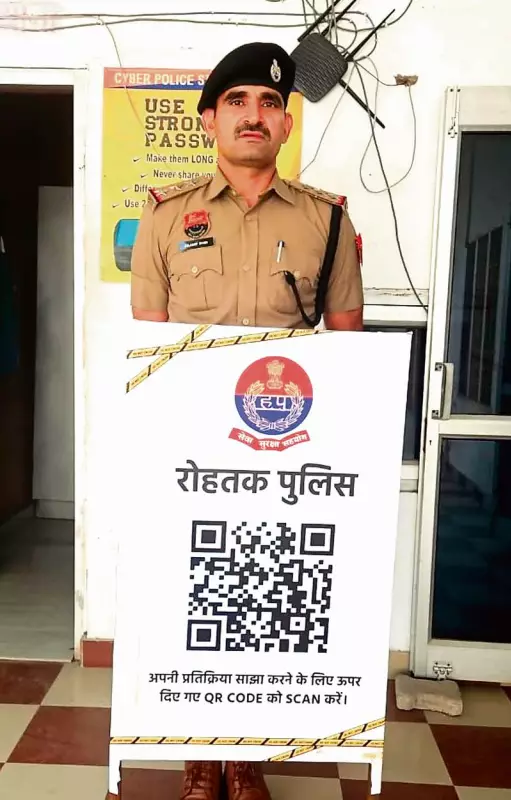
In a groundbreaking move towards digital transformation, Rohtak Police has launched an innovative QR code-based feedback system that promises to revolutionize how citizens interact with law enforcement agencies. This tech-driven initiative marks a significant step in bridging the gap between the police and the public in Haryana.
The Digital Feedback Revolution
The newly implemented system allows citizens to provide instant feedback about police services simply by scanning QR codes displayed at various police stations and public interaction points across Rohtak. This eliminates the traditional paper-based feedback mechanism, making the process more efficient, transparent, and accessible to all.
How the QR Code System Works
The process is remarkably simple and user-friendly:
- Citizens visit any police station or police-public interface point in Rohtak
- They scan the displayed QR code using their smartphone camera
- The code redirects them to a digital feedback form
- They can rate their experience and provide specific comments
- The feedback is instantly recorded in the police database
Benefits for Citizens and Police
This innovative approach offers multiple advantages for both the public and law enforcement:
- Real-time Feedback: Immediate recording of citizen experiences and concerns
- Enhanced Transparency: Digital trail ensures accountability and proper follow-up
- Data-Driven Improvements: Police can analyze patterns to improve service delivery
- Accessibility: No need for physical forms or multiple visits
- Confidentiality: Secure and anonymous feedback mechanism
Broader Impact on Policing
The QR code feedback system represents a significant shift towards community-oriented policing in Haryana. By leveraging technology, Rohtak Police aims to build stronger trust with citizens while gathering valuable insights to enhance their operational efficiency and public service approach.
This initiative aligns with the broader digital India mission and demonstrates how technology can be harnessed to improve governance and public service delivery at the grassroots level. The success of this pilot project in Rohtak could potentially serve as a model for other districts across India seeking to modernize their police-public interaction mechanisms.





